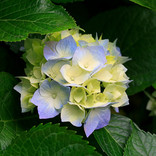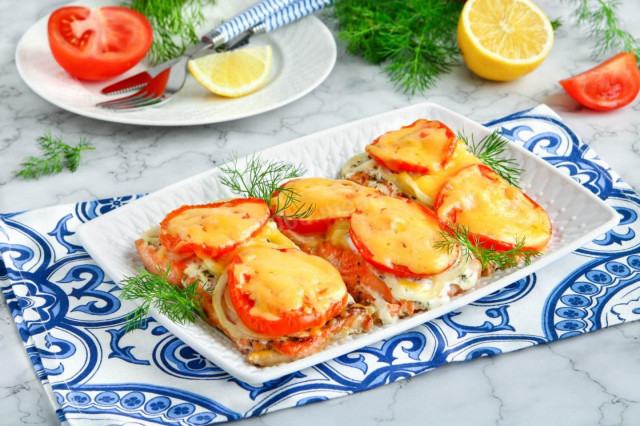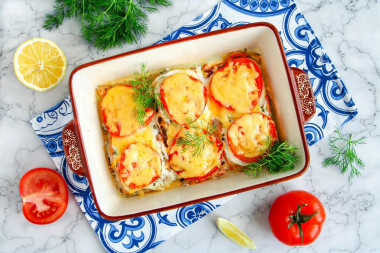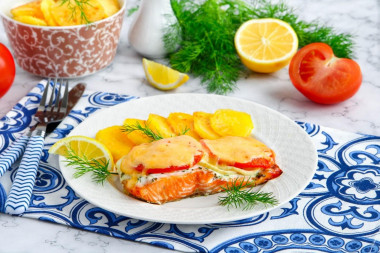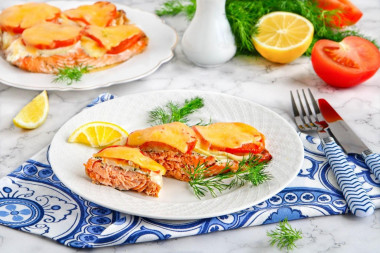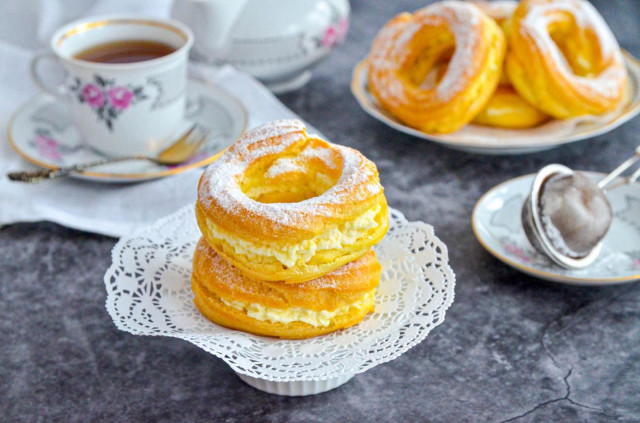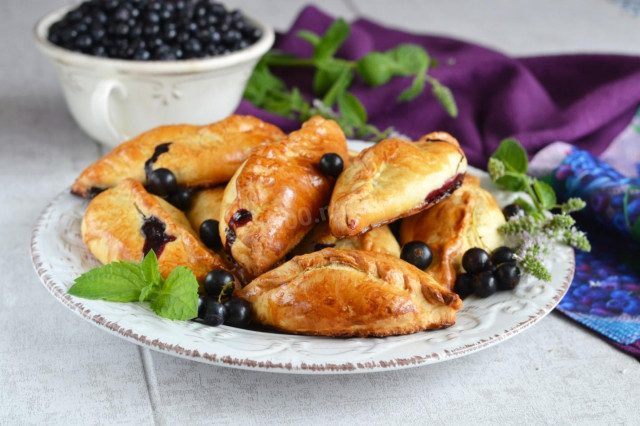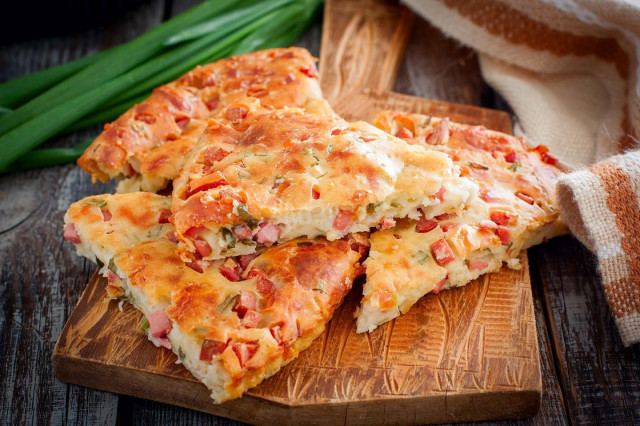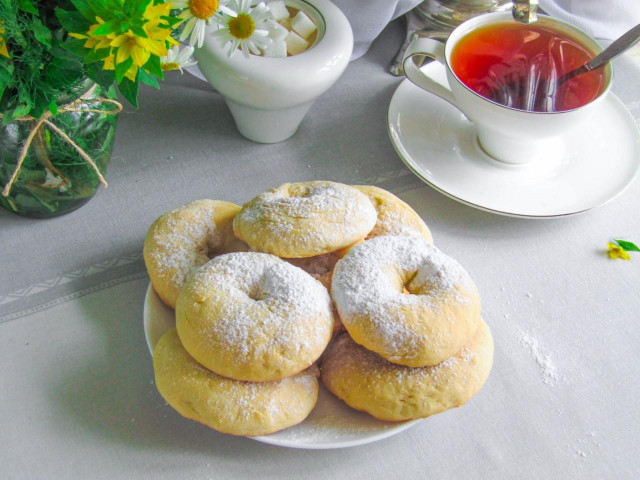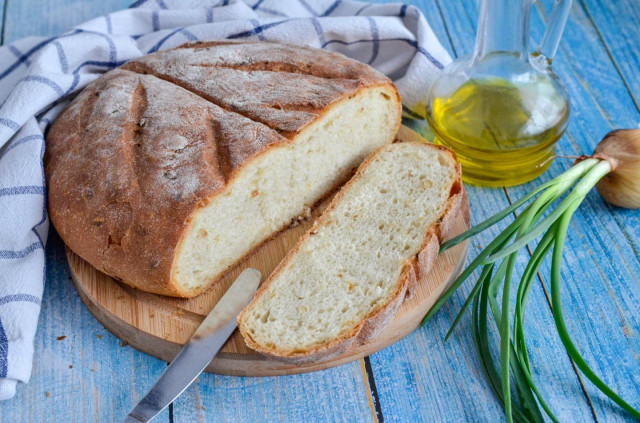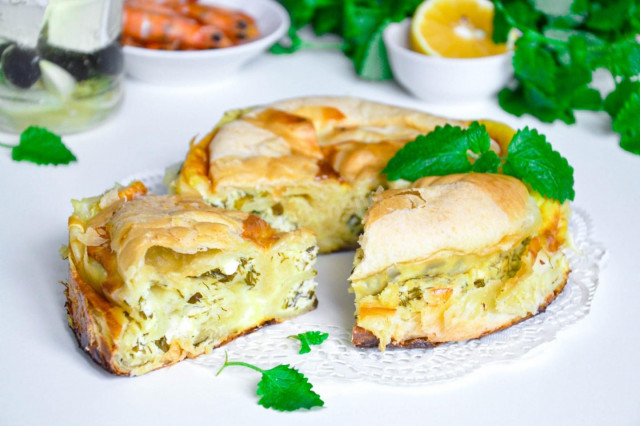Composition / ingredients
Step-by-step cooking
Step 1:
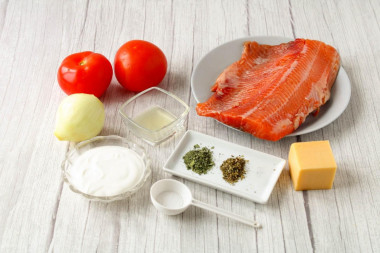
How to bake fish fillets in the oven? Prepare the necessary products. You can use fillets of any fish. I have a trout fillet pre-peeled from the skin and bones. Add spices and aromatic herbs to taste and desire.
Step 2:
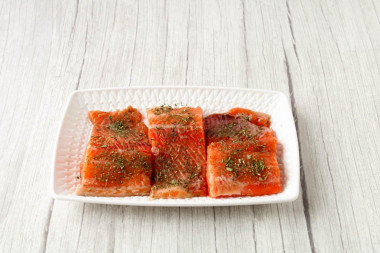
Wash the fish fillets, dry them well. Cut the fillet into portions. Add salt on both sides, sprinkle with aromatic herbs, sprinkle with lemon juice. Cover the fish and leave it on the table for 20-30 minutes so that the fillet is slightly marinated. If you are preparing fillets of pink salmon, pollock or other low-fat fish, add a tablespoon of vegetable oil.
Step 3:
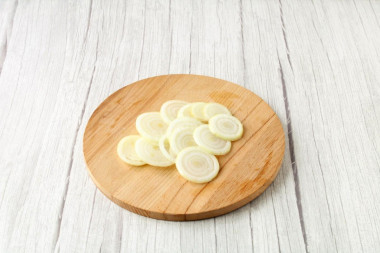
Pre-peeled onions wash, cut into thin rings.
Step 4:
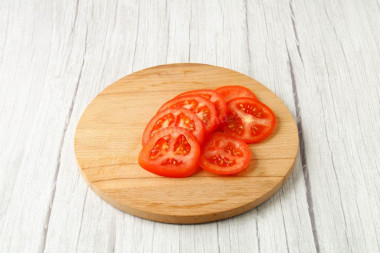
Wash the tomatoes, also cut into medium-thick slices. Tomatoes are better to take ripe, but not overripe, with a dense skin, so that when slicing and baking they retain their shape.
Step 5:
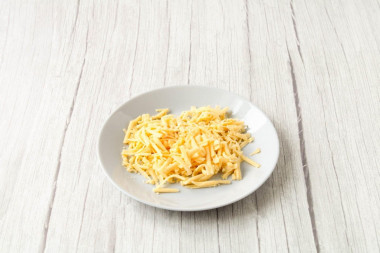
Grate the cheese on a coarse or fine grater. You can take any cheese: hard, semi-hard, melted. The main thing is that it is delicious and melts well.
Step 6:
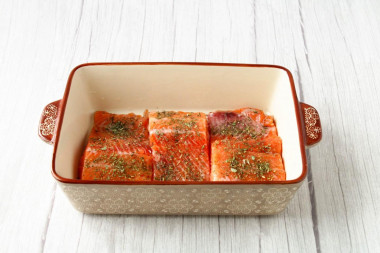
Grease the baking dish with a small amount of vegetable oil. A ceramic, metal or glass mold is suitable. Put the pieces of fish fillet in it. .
Step 7:
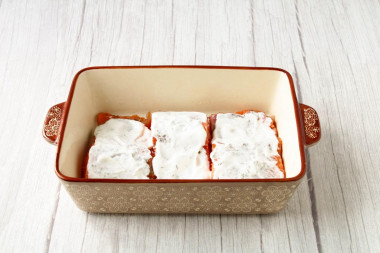
Smear the fish with sour cream on top.
Step 8:
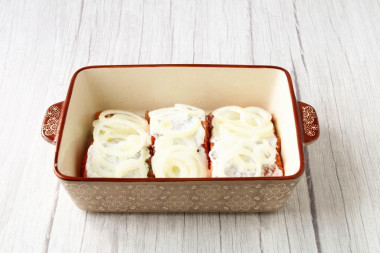
Spread onion rings on top of sour cream.
Step 9:
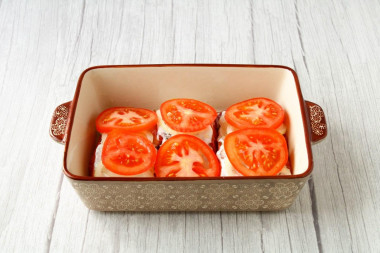
Put the tomato slices on the onion.
Step 10:
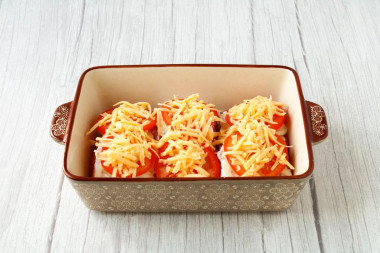
Sprinkle grated cheese on top.
Step 11:
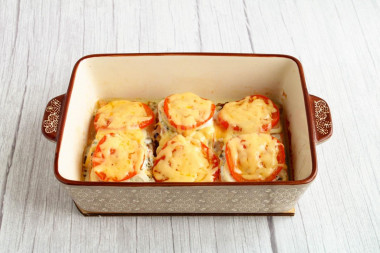
Bake the fish fillets in a preheated 180C oven for 30-35 minutes. To make the fish more juicy and not dry out, cover the mold with a layer of foil. Remove the foil 10-15 minutes before the end of cooking. The cooking time and mode may vary. Focus on the features of your oven.
Step 12:
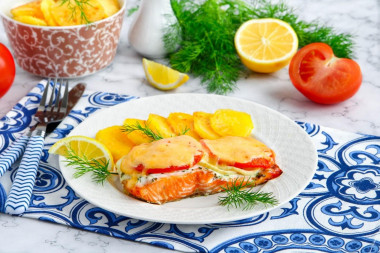
Serve baked trout fillet with any side dish. Enjoy your meal!
Keep in mind that everyone's ovens are different. The temperature and cooking time may differ from those specified in the recipe. To make any baked dish successful, use useful information about the features of ovens !
If you use ready-made spice mixes, be sure to read the composition on the package. Often, salt is already present in such mixtures, take this into account, otherwise you risk over-salting the dish.
Note that the quality and taste of the finished dish largely depends on the proper defrosting of the ingredients. How to avoid mistakes and choose the best way, read the article about defrosting.
Caloric content of the products possible in the composition of the dish
- Tomatoes - 23 kcal/100g
- Sour cream of 30% fat content - 340 kcal/100g
- Sour cream of 25% fat content - 284 kcal/100g
- Sour cream with 20% fat content - 210 kcal/100g
- Sour cream of 10% fat content - 115 kcal/100g
- Sour cream - 210 kcal/100g
- Dutch cheese - 352 kcal/100g
- Swiss cheese - 335 kcal/100g
- Russian cheese - 366 kcal/100g
- Kostroma cheese - 345 kcal/100g
- Yaroslavsky cheese - 361 kcal/100g
- Altai cheese 50% fat content - 356 kcal/100g
- Soviet cheese - 400 kcal/100g
- Cheese "steppe" - 362 kcal/100g
- Uglich cheese - 347 kcal/100g
- Poshekhonsky cheese - 350 kcal/100g
- Lambert cheese - 377 kcal/100g
- Appnzeller cheese with 50% fat content - 400 kcal/100g
- Chester cheese with 50% fat content - 363 kcal/100g
- Edamer cheese with 40% fat content - 340 kcal/100g
- Cheese with mushrooms of 50% fat content - 395 kcal/100g
- Emmental cheese with 45% fat content - 420 kcal/100g
- Gouda cheese with 45% fat content - 356 kcal/100g
- Aiadeus cheese - 364 kcal/100g
- Dom blanc cheese (semi-hard) - 360 kcal/100g
- Lo spalmino cheese - 61 kcal/100g
- Cheese "etorki" (sheep, hard) - 401 kcal/100g
- White cheese - 100 kcal/100g
- Fat yellow cheese - 260 kcal/100g
- Altai cheese - 355 kcal/100g
- Kaunas cheese - 355 kcal/100g
- Latvian cheese - 316 kcal/100g
- Limburger cheese - 327 kcal/100g
- Lithuanian cheese - 250 kcal/100g
- Lake cheese - 350 kcal/100g
- Gruyere cheese - 396 kcal/100g
- Fresh basil - 27 kcal/100g
- Dried basil - 251 kcal/100g
- Salt - 0 kcal/100g
- Onion - 41 kcal/100g
- Lemon juice - 16 kcal/100g
- Fish fillet - 204 kcal/100g
- Herb mixture - 259 kcal/100g
